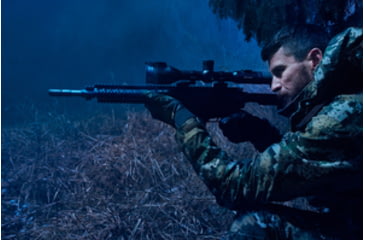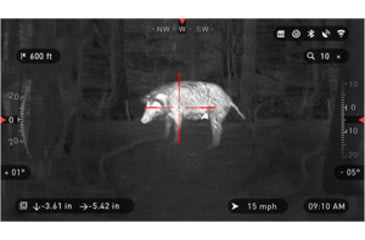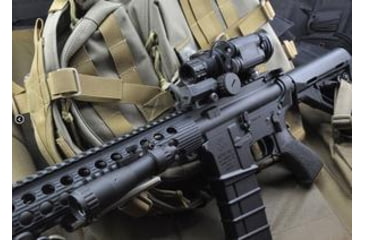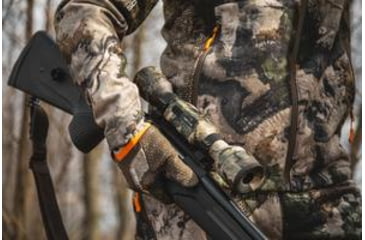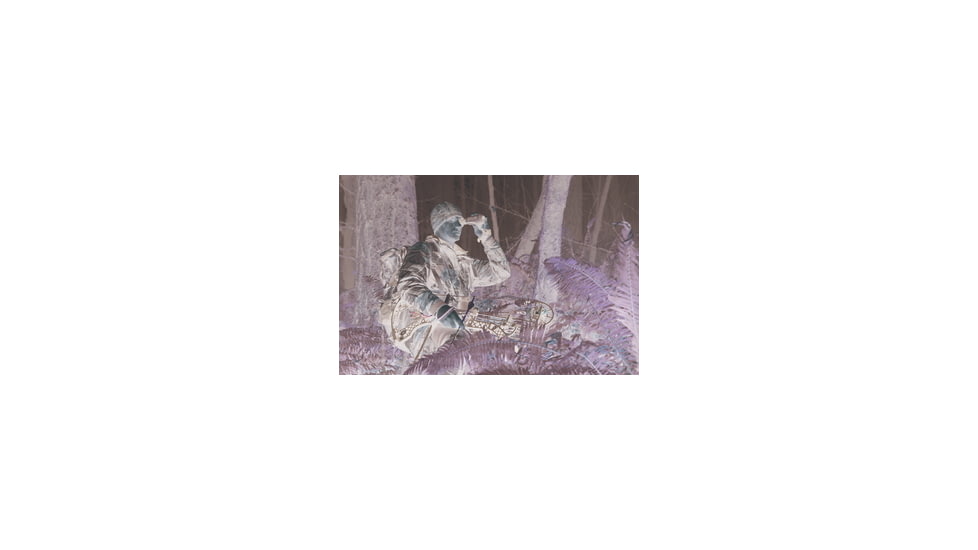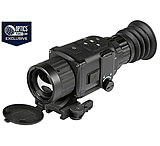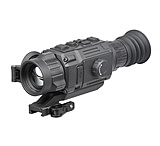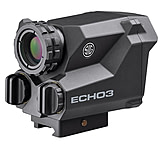If you’re looking to upgrade your arsenal, you can’t go wrong with a thermal rifle scope or thermal monocular. Thermal imaging devices are modern tools that are becoming more popular because they are extremely versatile and useful for hunters, tactical shooters, and everyone in between. Since thermal scopes pick up on heat signatures, some people assume they can see people hiding behind walls when looking through the optic. However, to answer the question posed by the title, no, you cannot see through walls with a thermal scope. Even though thermal imaging devices are powerful, most walls in a standard home or building have insulation, which prevents a thermal scope from picking up the heat signature of something on the other side. Although, depending on the amount of heat, you can sometimes see electrical pulses and other heat signatures inside the walls. Despite this lack of X-ray tech, high-quality thermal rifle scopes and thermal monoculars are still extremely useful for plenty of reasons, so let’s take a closer look at why they’re becoming more popular.![]()
How Do Thermal Scopes Work?
Everything emits a heat signature, from a rock in the woods to a deer hiding in deep brush and a tree along your path. While a traditional rifle scope magnifies visible light to give you a better picture, a thermal rifle scope measures infrared light, which is not visible to the human eye. The thermal sensor records how much infrared energy is coming from each object and uses this information to show the heat that the object is emitting.
Night vision optics also use infrared light, but they work differently than thermal scopes. Night vision picks up a wide range of light waves, including some infrared. However, night vision rifle scopes and goggles focus on amplifying the small amounts of ambient light to give you more vision in dark areas and low-light environments. Specifically, thermal imaging captures the upper portion of the infrared light wavelength that gives off heat, while night vision captures the lower portion.
To show you the differences in heat signatures, thermal optics assign colors to different levels of heat. This helps you spot distinct features and parse the landscape, ensuring you get a good view of your target. There are a range of color palettes for thermal scopes, and each one has different advantages. Below are some of the most common:
White Hot: This is the most popular option for thermal imaging. This is a grayscale color palette, which means all colors are in different shades of gray between black and white. The coldest objects are completely black, while warm or hot objects are bright white. This is a versatile option because it creates realistic, life-like images, and it works across a broad range of temperatures. White hot is a solid option for both hunting in the wilderness and urban combat.
- Black Hot: This is the opposite of white hot and just has the colors inverted. This can offer better contrast for some people, as the hot, black objects stick out well against a mostly white background. This is also a popular option in the night hunting community, especially predator hunting. Since the ground and surrounding area is much cooler at night, you can easily spot your prey.
- Rainbow High Contrast: Usually, this is what people imagine when thinking of thermal vision optics. Rainbow high contrast uses a variety of colors to give you a granular view. Blue, purple, and green are used for cooler colors, with purple being the coldest. Then yellow, orange, and red are for warmer colors, with red as the hottest. This gives you a full gradient to see small differences in heat changes. While you can find thermal rifle scopes and thermal monoculars that use the rainbow palette, it is more common with thermal cameras.
What Are the Best Ways to Use Thermal Imaging Devices?
Thermal scopes are useful in tons of ways, so investing in one gives you a lot of versatility. One of the most popular reasons for purchasing a thermal weapon sight is for hunting predators and varmints, like coyotes, wild hogs, and rats. Since it is easiest to hunt these animals at night, an HD thermal rifle scope with excellent image quality lets you spot them quickly and easily. This is especially useful for wild hogs, as they are known to burrow under thick underbrush when sleeping at night, which can make them difficult to spot.
Even before you go hunting, a thermal monocular can be extremely practical when you are scouting around. If you’re out in the western backcountry scouting for a couple days, you probably start off early in the morning. In this low-light situation, spotting mule deer and elk is more difficult. Instead of straining your eyes looking through a standard spotting scope or pair of binoculars, you can scan the terrain in front of you with a thermal monocular to see if any wildlife is nearby.
While a lot of the uses of thermal scopes happen at night or in low-light conditions, they also work during the day. Since they don’t amplify light like night vision optics, you don’t have to worry about temporarily blinding yourself if you transition from a dark to light environment or use the optic during the day. This provides even more functionality and gives you tons of versatility, especially in tactical and combat scenarios. For example, military and law enforcement personnel can benefit from thermal imaging rifle scopes when training for urban environments, as you can more easily spot concealed targets.
What Kind of Cool Features Can Thermal Rifle Scopes Have?
Modern thermal rifle scopes have some awesome features and upgrades over the first models produced, and they are designed to make them more accessible and functional. For example, digital, recoil-activated video recording of your view through the rifle scope lets you keep track of your shots while hunting, and Wi-Fi and Bluetooth capability even lets you stream the video directly to your laptop or smartphone to save. Another thing to look for on a new thermal rifle scope is long-lasting battery life. Since these powerful optics use a lot of energy, you want a battery that will last for several hours to accommodate you while you’re out hunting, as having it die on you can be detrimental to your success.
Some of the coolest thermal imaging rifle scopes that have a lot of these features are the ATN ThOR 4 optics. The HD digital display shows your shot at a resolution of 1280x720 pixels and a 60Hz refresh rate, and it records at 1280x960 pixels. This gives you high-quality footage to review after a full day of long-range shooting. Plus, the ATN ThOR 4 rifle scopes have a built-in smart rangefinder, digital zoom, and a variety of reticle options.
If you’re looking for an extremely powerful thermal rifle scope with excellent magnification and detection range, then you can’t go wrong with the Pulsar Thermion and Pulsar Thermion 2 families of optics. Each one of them has an extremely long detection range that can go up to over 2,000 yards, and they mount to both Picatinny and Weaver rails. With 8x digital zoom and the ability to save up to five different rifle profiles to track your ballistics, these rifle scopes are seriously high-tech. Useful for both medium-range and long-range shooting, the Pulsar Thermion rifle scopes give you excellent clarity when hunting.
Check Out Our Thermal Imaging Devices Today!
Whether you’re looking for a thermal rifle scope to take down those pesky hogs and coyotes on your property or a thermal monocular to give you the edge when scouting your favorite hunting spot, OpticsPlanet has you covered. Check out all of our thermal imaging devices from Pulsar, ATN, Trijicon, AGM Global Vision, and more. If you’re more into night vision rifle scopes, we also have plenty of those available. For all your other firearm needs, check out our large selection of in-stock ammo, rifle parts, and gun cases.
